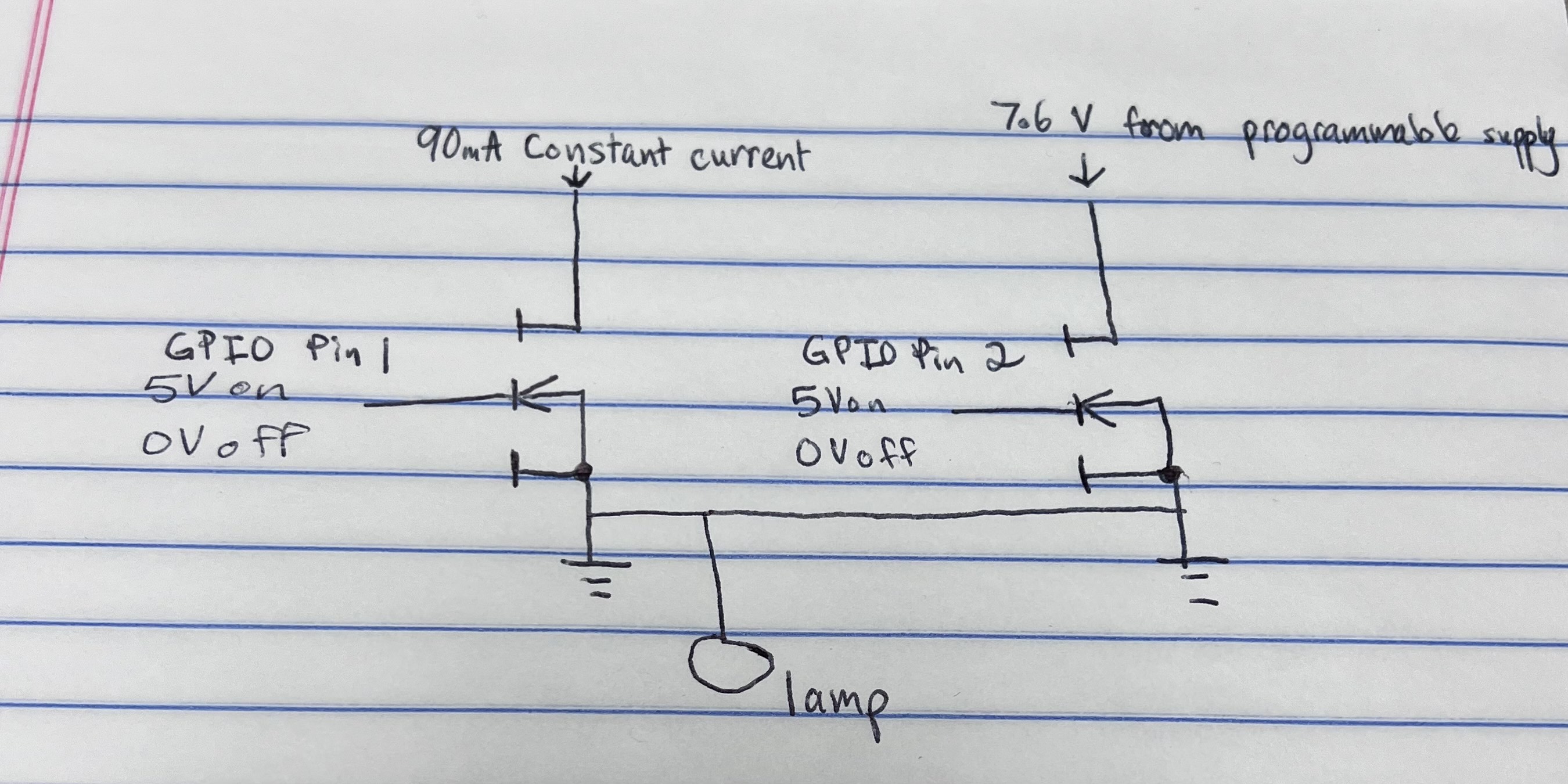The safer way to switch a 90 mA current source ON/OFF with a N-channel MOSFET is shown below. One should ensure that M1's drain-to-source breakdown voltage exceeds the open-circuit current source voltage.

simulate this circuit – Schematic created using CircuitLab
Be aware that control of MOSFET gate is opposite of OP's wishes... 90 mA is directed to the lamp when M1 gate is at 0V. When MOSFET gate is +5V, the MOSFET shunts 90 mA to GND rather than through the lamp. R1 is included to keep M1 firmly off if no control voltage is attached to M1's gate. So default operation allows 90 mA to the lamp.
A P-channel MOSFET (M2) more easily switches the +7.6V BAT1 voltage source. However, its gate cannot be driven directly from a GPIO pin that can only rise to +5V. A small transistor (Q1) does the switching. If R3 is left open-circuit, Q1 is off, M2 as well.
Caution:
If M1's control voltage is 0V, and Q1's control voltage is +5V, you get undefined operation - avoid this condition. If no lamp exists, or burns out, the 90 mA source will try to charge BAT1. OP says that BAT1 is a "programmable voltage source" (which is certainly not a battery). Many such voltage sources mis-behave if you try to charge them - bad things could happen.
GND symbol shown must also extend to GPIO's microcontroller GND too.


